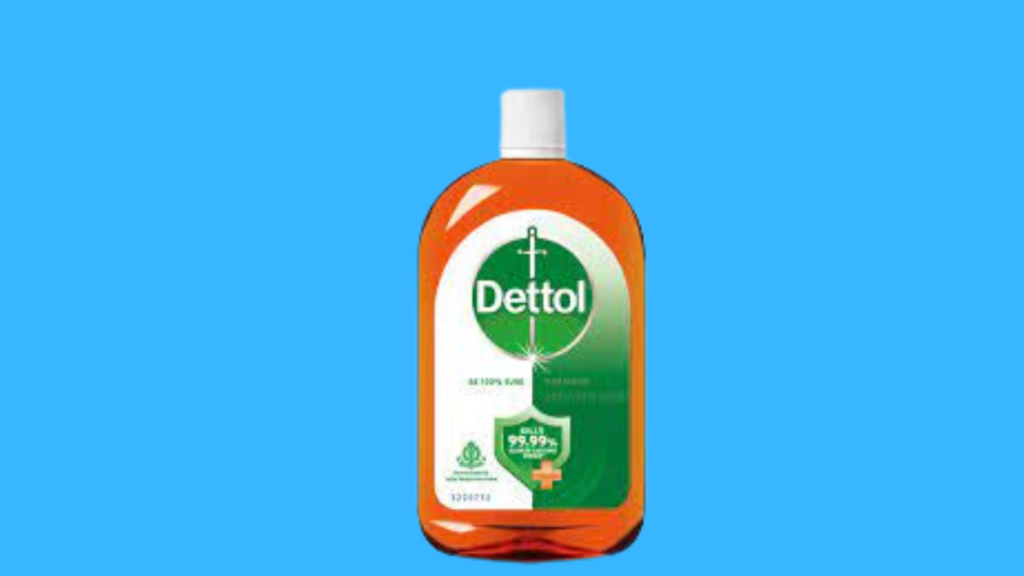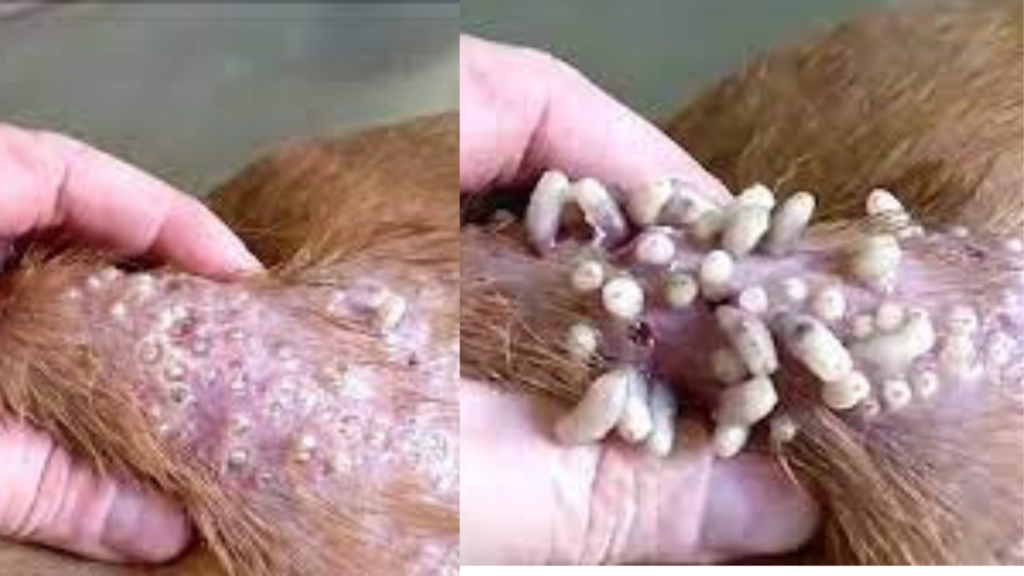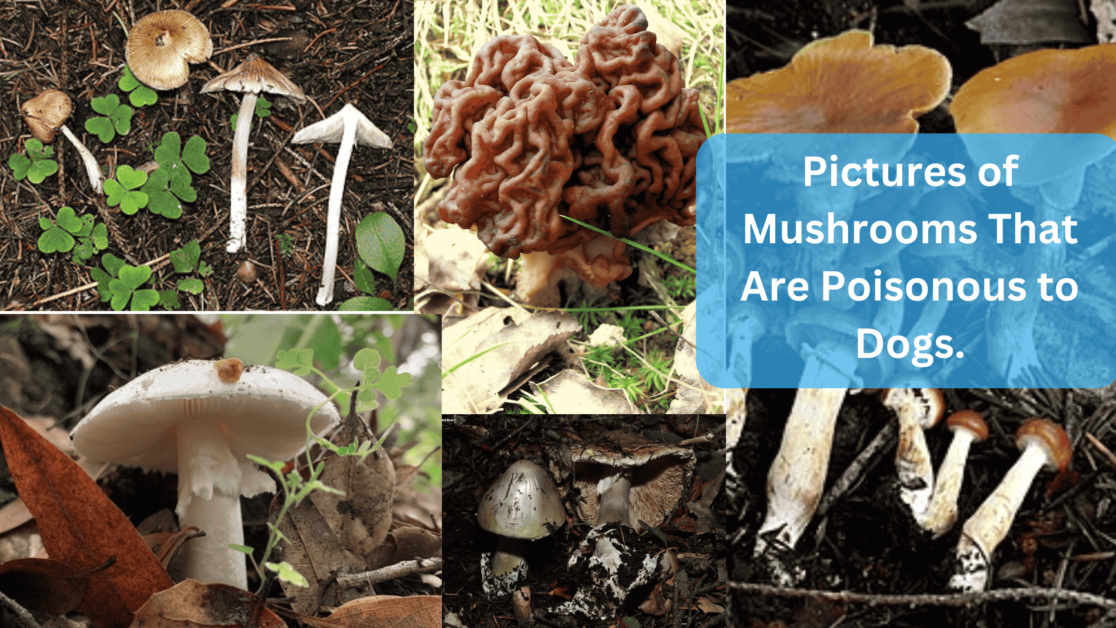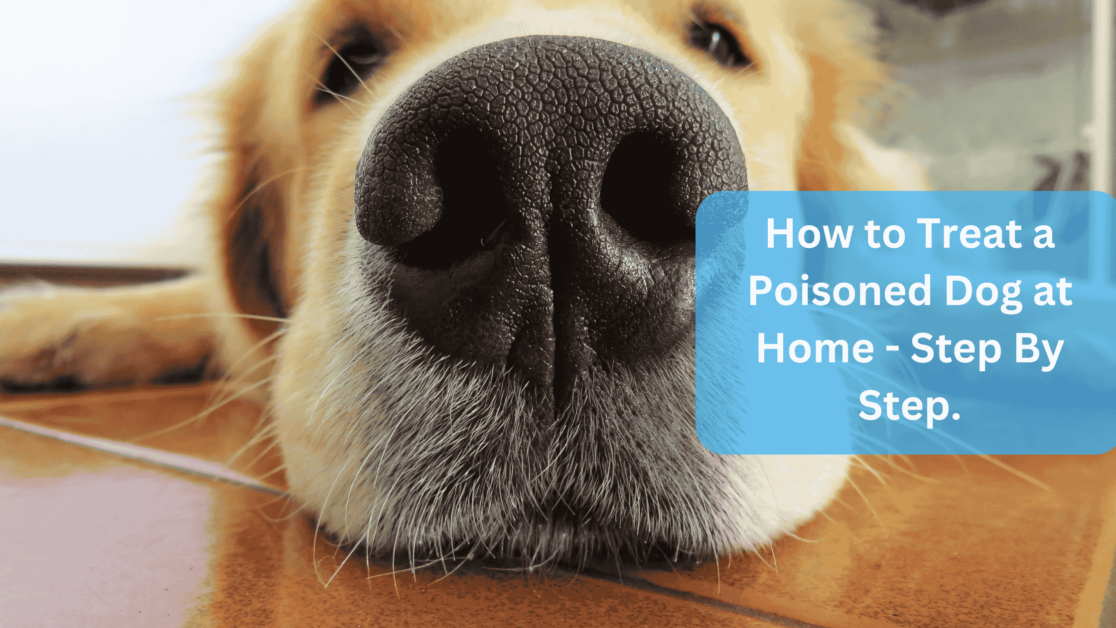Maggot infestation in dogs is a distressing and potentially dangerous situation that requires immediate attention.
These tiny, wriggling larvae can cause discomfort and harm our furry friends.
If you’re facing this issue, you might wonder if Dettol, a commonly used antiseptic, can effectively kill maggots on dogs.
Can Dettol Kill Maggots in Dogs?

Yes, Dettol can be effective in killing maggots in dogs. While Dettol is a popular antiseptic and disinfectant used for various purposes, its effectiveness against maggots requires careful consideration.
Dettol is primarily designed for external use on human skin and surfaces. Although it possesses antibacterial and antifungal properties, its specific effectiveness against maggots may vary.
Additionally, the safety of using Dettol on dogs and its direct application to maggot-infested wounds should be thoroughly understood to prevent adverse reactions.
Throughout this article, we will provide valuable insights and alternative methods to treat maggot infestation in dogs, considering the potential use of Dettol as a solution.
However, it is essential to consult with a veterinarian before using any products or attempting home remedies to ensure the best possible care for your furry companion.
So, let’s dive into the world of maggot infestation, explore different treatment options, and evaluate the role of Dettol in combating this issue.
By the end of this article, you will understand how to effectively deal with maggot infestation in dogs, ensuring their well-being and comfort.
I. Understanding Maggot Infestation in Dogs

A. What are maggots?
When it comes to maggot infestation in dogs, it’s important to understand what maggots are.
Maggots are the larval stage of flies, specifically the common green bottle fly or blowfly.
These tiny, legless creatures hatch from fly eggs and can quickly multiply in numbers.
Larvae are attracted to moist and decaying organic matter, such as wounds, feces, or rotting food.
They thrive in warm and humid environments, making dogs susceptible to infestation, especially if they have open wounds or poor hygiene.
B. Causes of maggot infestation in dogs
Maggot infestation in dogs typically occurs when flies lay eggs on or near a dog’s body.
The eggs hatch into maggots, feeding on the dog’s tissue or organic matter in wounds.
Common causes of maggot infestation in dogs include untreated wounds, excessive skin folds or creases, filthy fur, urine or feces-soaked fur, and poor hygiene practices.
Dogs with mobility issues or underlying health conditions are also more susceptible to maggot infestations.
C. Signs and symptoms of maggot infestation
Identifying maggot infestation in dogs early is crucial for prompt treatment. Look out for the following signs and symptoms:
1. Presence of maggots: You may observe tiny white larvae moving on or near the dog’s body, particularly around wounds, filthy fur, or areas with excessive moisture.
2. Discomfort and itching: Infested dogs may exhibit discomfort, constant scratching, licking, or biting at the affected area.
3. Foul odor: Maggots produce a distinctive smell that can be unpleasant and noticeable.
4. Swelling and inflammation: The infested area may show redness, swelling, or inflammation.
5. Behavioral changes: Dogs may become lethargic, lose their appetite, or display signs of pain or distress.
It’s important to remember that maggot infestation can seriously require immediate veterinary attention.
If you notice any signs or suspect your dog has maggots, consult your veterinarian for an accurate diagnosis and appropriate treatment.
In the following sections, we will explore various treatment options, including using Dettol, to address maggot infestation in dogs effectively. Stay tuned for valuable insights and recommendations.
II. Treating Maggot Infestation in Dogs

A. Importance of prompt action
When it comes to treating maggot infestation in dogs, prompt action is essential.
Maggot infestations can cause significant discomfort, pain, and potential complications for your furry friend.
Delaying treatment can worsen the condition and increase the risk of infection. Therefore, acting swiftly and effectively is crucial to alleviate your dog’s suffering and prevent further harm.
B. Step-by-step guide to treating maggots on dogs
1. Preparing the necessary supplies:
Before starting the treatment, gather the required supplies to ensure a smooth and efficient process.
These may include gloves, tweezers, saline solution, clean towels, antiseptic solution (such as diluted povidone-iodine or chlorhexidine), and a topical wound treatment prescribed by your veterinarian.
2. Safely removing the maggots:
Carefully inspect the affected area to locate and remove the larvae.
It’s crucial to handle this process to minimize your dog’s discomfort gently.
Using gloved hands or tweezers, pick up each maggot and place them in a container filled with soapy water or rubbing alcohol to ensure they are properly disposed of.
3. Cleaning and disinfecting the wound:
Thoroughly clean the wound using a mild saline solution or as advised by your veterinarian.
Gently flush the area to remove any remaining debris or maggots’ remnants.
After cleaning, apply an antiseptic solution to disinfect the wound and promote healing.
Avoid using Dettol directly on the wound, which may cause skin irritation.
4. Applying topical treatments:
Follow your veterinarian’s instructions regarding the application of topical treatments.
They may recommend specific ointments or creams to aid in wound healing and prevent infection.
These topical treatments can help soothe the affected area and provide additional protection.
5. Monitoring and aftercare:
Keep a close eye on your dog’s progress during the healing process.
Watch for signs of infection, such as increased redness, swelling, discharge, or worsening symptoms.
Administer any prescribed medications as directed.
Provide a clean and comfortable environment for your dog to rest and recover.
If you notice any concerning changes or the infestation persists, consult your veterinarian for further guidance.
Remember, while the outlined steps can assist in treating maggot infestation in dogs, it’s crucial to involve your veterinarian for proper diagnosis and treatment recommendations.
They can provide personalized advice based on your dog’s condition and ensure the best care.
Also Read : Dog Limping After Splint Removal – Best Guide 2023
III. Exploring Dettol as a Solution
A. Understanding Dettol and its properties
Dettol is a widely recognized brand known for its antiseptic properties.
It contains various active ingredients, including chloroxylenol, which exhibits antibacterial and antifungal properties.
Dettol is commonly used for wound cleansing and disinfection in humans and is a potential solution for addressing dog maggot infestation.
B. Can Dettol effectively kill maggots on dogs?
While Dettol has antimicrobial properties, its effectiveness in killing maggots in dogs may vary.
It is important to note that maggot infestations can be complex and require comprehensive treatment.
While Dettol may help disinfect wounds and prevent infection, it may not be sufficient as a standalone treatment for killing maggots.
C. Safe usage of Dettol for maggot infestation
Suppose you decide to use Dettol to address maggot infestation in dogs. In that case, it is crucial to do so cautiously and follow safe usage guidelines.
Here are a few considerations to keep in mind:
– Dilute Dettol properly: Use Dettol in its diluted form as per the instructions provided on the packaging. Avoid undiluted, as it may cause skin irritation or other adverse effects.
– Avoid sensitive areas: Avoid applying Dettol near your dog’s eyes, ears, or sensitive mucous membranes. If contact occurs, rinse the area thoroughly with clean water.
– Consult your veterinarian: Before using Dettol or any other product on your dog, consult your veterinarian. They can guide you on its suitability for your dog’s specific condition and offer alternative solutions if necessary.
D. Risks and considerations of using Dettol
It’s important to be aware of the potential risks associated with using Dettol for maggot infestation in dogs:
– Skin sensitivity: Some dogs may be more sensitive to the ingredients in Dettol, which could cause skin irritation or allergic reactions. If you notice any adverse reactions, discontinue use immediately and consult your veterinarian.
– Incomplete maggot removal: Dettol alone may not completely eradicate maggot infestations. Ensuring thorough maggot removal through careful inspection and proper wound cleansing is crucial.
– Professional guidance: Maggot infestations can vary in severity, and professional veterinary care is often necessary for proper diagnosis and treatment. Always consult your veterinarian for expert advice.
Combining appropriate maggot removal techniques, wound cleansing, and consultation with your veterinarian can ensure a comprehensive approach to addressing maggot infestation in dogs.
IV. Alternative Methods to Kill Maggots on Dogs
A. Natural remedies and home solutions
While Dettol is one potential solution, there are also natural remedies and home solutions that can help address dog maggot infestations. These options are often preferred by pet owners who prefer more holistic approaches. Here are a few natural remedies to consider:
– Warm saline solution: A warm saline solution can flush maggots from the affected area. Dissolve salt in clean, warm water and gently rinse the wound.
– Neem oil: Neem oil has natural antibacterial and antifungal properties. Applying a small amount of diluted neem oil to the wound can help deter maggots and promote healing.
– Turmeric paste: Turmeric possesses antimicrobial properties and can heal wounds. Create a paste using turmeric powder and water, and apply it to the wound after a thorough cleaning.
B. Seeking professional veterinary care
In cases of severe maggot infestations or if you are unsure about handling the situation yourself, it is recommended to seek professional veterinary care.
Veterinarians have the expertise and resources to provide proper diagnosis and treatment.
They can perform maggot removal, administer appropriate medications, and ensure your dog’s overall well-being.
C. Other recommended products or treatments
Apart from Dettol, several other products and treatments can effectively address maggot infestations in dogs. Some of these options include:
– Veterinary-approved insecticides: Your veterinarian may recommend specific insecticides that are safe for dogs to kill Maggots.
– Topical ointments or creams: There are various topical treatments available that can help in eliminating maggots and promoting wound healing. These may contain ingredients such as antibiotics or antiparasitic agents.
– Systemic medications: In severe cases, oral or injectable medications may be prescribed by a veterinarian to address underlying infections and kill Maggots.
Remember, it is essential to consult with your veterinarian before trying any alternative methods or using new products.
They can provide guidance based on your dog’s individual needs and recommend the most suitable course of action.
V. First Aid for Maggot Wounds in Dogs
A. Recognizing and Assessing Maggot-Infested Wounds
It’s important to be able to identify maggot-infested wounds on your dog.
Look for signs such as an unpleasant odor, visible maggots, excessive licking or scratching, swelling, redness, or discharge from the affected area.
Once you spot these indications, it’s crucial to take immediate action.
B. Immediate Actions to Take
When faced with a maggot-infested wound on your dog, here are some essential steps to follow for immediate first aid:
1. Stay calm: It’s natural to feel concerned, but staying calm will help you handle the situation better.
2. Restrain your dog: Ensure your dog remains still and comfortable to prevent further aggravation of the wound or accidental injury.
3. Protect yourself: Wear gloves to protect your hands from direct contact with the maggots or the wound.
4. Remove visible maggots: Use blunt-tipped tweezers or forceps to remove visible maggots from the wound. Be gentle and avoid causing any additional harm to your dog.
5. Clean the wound: Gently clean the wound with a mild antiseptic solution or warm saline water. This will help remove debris and reduce the risk of infection.
6. antiseptic cream or ointment: Once the wound is clean and dry, apply a veterinary-approved antiseptic cream or ointment to prevent further infection and promote healing.
C. How to Provide Temporary Relief and Prevent Further Infestation
While waiting for professional veterinary care or before you can administer additional treatments, here are some measures you can take to provide temporary relief and prevent further infestation:
1. Cover the wound: Use a clean, non-stick dressing or bandage to cover the wound. This will protect it from further contamination and reduce the likelihood of fly eggs laying in the area.
2. Prevent your dog from licking or scratching: Ensure your dog does not have access to the wound, as excessive licking or scratching can worsen the condition. An Elizabethan collar can prevent your dog from reaching the affected area.
3. Keep your dog clean and dry: Maintaining good hygiene is crucial during healing. Regularly clean your dog’s fur, especially in the surrounding wound area, to prevent additional infections.
4. Monitor for signs of infection: Keep a close eye on the wound for any signs of infection, such as increased redness, swelling, or discharge. If you notice any concerning changes, consult with a veterinarian promptly.
Remember, while providing first aid can help alleviate immediate discomfort and prevent further infestation, seeking professional veterinary care for a comprehensive evaluation and proper treatment of maggot-infested wounds in dogs is essential.
In the next section, we will discuss preventive measures to minimize the risk of maggot infestations and ensure your dog’s well-being.
VI. Prevention and Best Practices
A. Tips to Prevent Maggot Infestation in Dogs
Taking proactive measures can significantly reduce the risk of maggot infestation in your beloved furry friend. Here are some essential tips to keep in mind:
1. Regular grooming: Maintain a routine grooming schedule to keep your dog’s coat clean and free from debris that can attract flies.
2. Clean living environment: Ensure your dog’s living area, bedding, and surroundings are clean and free from waste or decaying matter that may attract flies.
3. Prevent access to carcasses: Avoid letting your dog come into contact with dead animals, as they can harbor maggots and other harmful parasites.
4. Eliminate food sources for flies: Properly dispose of leftover food and close trash bins to discourage fly activity near your dog’s living area.
B. Proper Wound Care and Hygiene
Maintaining good wound care and hygiene practices can go a long way in preventing maggot infestations. Here’s what you should do:
1. Promptly address wounds: Clean and treat any wounds your dog sustains immediately to minimize the risk of flies laying eggs in the open wound.
2. Regularly inspect your dog for wounds: Conduct routine checks for any injuries or sores, paying particular attention to areas prone to friction, moisture, or skin folds.
3. Keep wounds clean and dry: Cleanse wounds with a veterinarian-recommended antiseptic solution and ensure they remain dry to discourage fly attraction.
C. Regular Inspections and Parasite Control
Regular inspections and effective parasite control measures are crucial in preventing maggot infestations. Follow these guidelines:
1. Conduct thorough inspections: Regularly examine your dog’s body, especially sensitive areas such as ears, anus, and genital region, for any signs of irritation, wounds, or parasites.
2. Use preventive treatments: Consult with your veterinarian about appropriate preventive treatments, such as topical medications or collars, to protect your dog against fleas, ticks, and other parasites that can cause wounds and attract flies.
3. Stay up to date with vaccinations: Ensure your dog is current on vaccinations to reduce the risk of diseases that can weaken their immune system and make them more susceptible to maggot infestations.
Following these preventive measures and best practices can significantly reduce the chances of your dog experiencing maggot infestation.
Remember, regular veterinary check-ups and open communication with your veterinarian are essential for maintaining your dog’s overall health and well-being.
In conclusion, being proactive in preventing maggot infestations, practicing proper wound care, and prioritizing your dog’s hygiene and parasite control will help keep your furry companion happy, healthy, and free from the discomfort of maggot-related issues.
Frequently Asked Questions
Is Dettol safe for dogs?
When used properly and in moderation, Dettol can be safe for dogs. However, it is important to follow the guidelines provided by the manufacturer and consult with your veterinarian before using any product on your furry friend. Dogs may have different sensitivities, so it’s crucial to watch for any signs of adverse reactions and discontinue use if necessary.
What other methods can be used to kill maggots on dogs?
In addition to using Dettol, several other methods can effectively eliminate maggots in dogs:
1. Warm water and mild soap: Gently washing the affected area with warm water and mild soap can help remove maggots.
2. Veterinary-recommended insecticides: Your veterinarian may prescribe or recommend specific insecticides or medications to kill maggots.
3. Natural remedies: Some natural solutions, such as diluted vinegar or essential oils, may help repel or kill maggots. However, it’s important to consult your veterinarian before using home remedies to ensure they are safe and effective for your dog.
How can one determine if the maggots are dead?
Determining if maggots are dead can be challenging. However, you can look for signs such as immobility, lack of touch response, or changes in coloration. It’s best to consult your veterinarian for an accurate assessment and guidance on further treatment.
Strategies for preventing maggots from coming back
Preventing a recurrence of maggot infestation is essential to ensure your dog’s well-being. Here are some strategies to consider:
1. Thorough wound care: Properly clean and care for any wounds your dog may have to minimize the risk of attracting flies and subsequent maggot infestation.
2. Regular inspections: Conduct routine inspections to promptly identify any wounds or signs of irritation that may attract flies.
3. Maintain a clean environment: Keep your dog’s living area clean, free from waste or decaying matter, and dispose of trash properly to deter fly activity.
4. Use preventive measures: Use veterinarian-recommended measures, such as flea and tick control products, to minimize the risk of wounds and subsequent maggot infestations.
Following these guidelines and seeking professional advice can help prevent maggot infestations, ensure your dog’s well-being, and promote a healthy and happy life for your furry companion.
Remember, when dealing with health concerns or infestations, it’s always best to consult your veterinarian for personalized advice and appropriate treatment options tailored to your dog’s specific needs.
Also Read : Exploring Essiac Tea for Dogs: Benefits, Usage, and Safety
Conclusion
Maggot infestation in dogs can be a distressing and potentially harmful condition.
In this article, we have explored various aspects of treating and preventing maggot infestations in dogs, specifically focusing on the potential use of Dettol as a solution.
We started by understanding what maggots are and the common causes of dog infestation.
We discussed the signs and symptoms to watch out for, emphasizing the Importance of prompt action in addressing this issue.
We provided a step-by-step guide on how to treat maggots on dogs, including preparing the necessary supplies, safely removing the maggots, cleaning and disinfecting the wound, applying topical treatments, and monitoring the healing process.
It’s crucial to follow these steps carefully to ensure effective treatment.
While exploring Dettol as a potential solution, we discussed its properties and whether it can effectively kill maggots on dogs.
However, it’s important to exercise caution and consult with a veterinarian before using any product on your dog.
Your veterinarian can provide personalized guidance based on your dog’s needs and health condition.
We also highlighted alternative methods for killing maggots on dogs, including natural remedies and seeking professional veterinary care.
Additionally, we emphasized the Importance of first aid for maggot-infested wounds. We provided temporary relief techniques to prevent further infestation.
We discussed important preventive measures such as wound care, regular inspections, and maintaining a clean environment to prevent future maggot infestations.
We also emphasized veterinarian-recommended preventive measures like flea and tick control.
In conclusion, it is vital to prioritize your dog’s well-being by promptly addressing maggot infestations.
While Dettol may be a potential solution, consulting with a veterinarian for proper diagnosis and treatment is crucial.
Each dog is unique; professional advice can ensure the most effective and safe approach.
Remember, your veterinarian is your trusted partner in your dog’s health journey. By seeking their guidance, you can provide the best care for your furry friend, ensuring their comfort and happiness.







